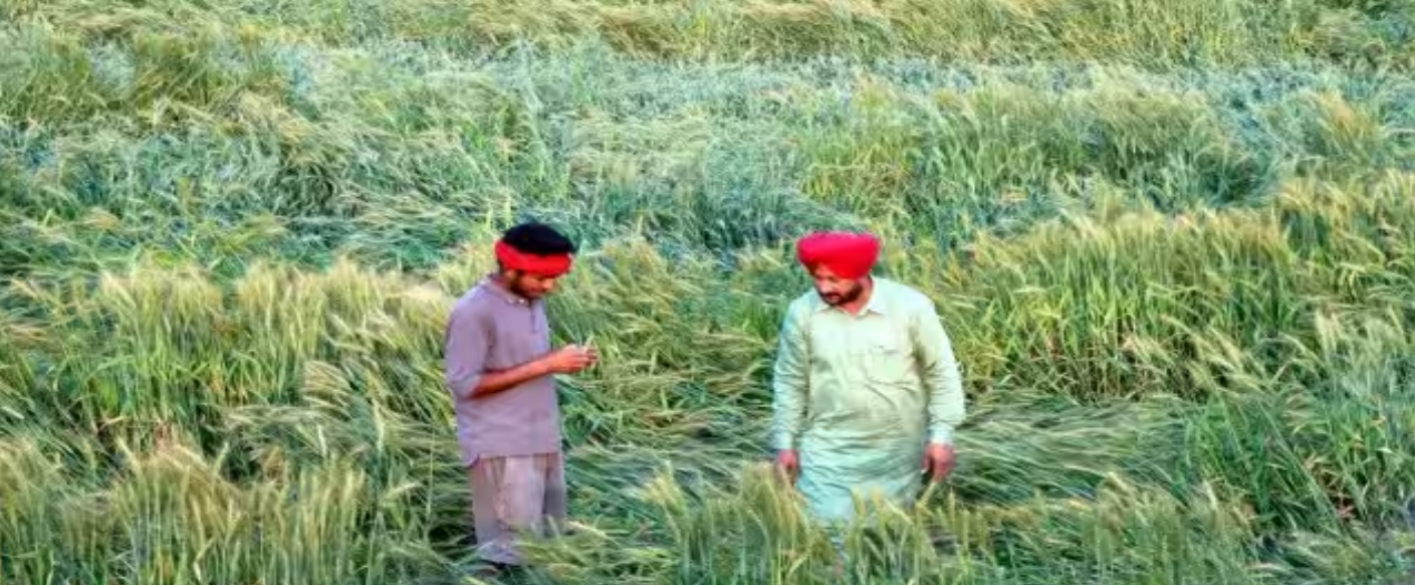Punjab farmers see red over govt’s insufficient flood damages of Rs 6,800 per acre

Farmers in Punjab have expressed dissatisfaction over the “grossly inadequate” compensation amount of Rs 6,800 per acre announced by the government for the paddy seedlings destroyed during the floods in July and August.
They argue that this compensation is insufficient considering the loss of not only their one-month-old crops but also the reduced yield from the late sowing of fresh paddy seedlings. Most of the farmers say they suffered a loss ranging from Rs 20,000 to Rs 70,000 per acre.
Parminder Singh, a farmer in Kapurthala district, who owns 5.5 acres had to replant his crops again in August after the flood miseries of July. Singh spent Rs 9,200 per acre for transplanting seedlings twice in the same field – this included labour charges of Rs 4,200 for the first transplanting and Rs 5,000 for the second.
Additionally, he incurred Rs 4,000 on puddling (done twice), and Rs 3,000 on fertilisers. Due to late sowing in August, the farmer from Channawindi village expects a yield of only 25-26 quintals per acre.
“If I had been able to sow the crop on time, the yield would have been 32-33 quintals per acre. Consequently, my cost of cultivation now stands at Rs 16,000 per acre, resulting in a loss of around Rs 13,000 per acre due to less yield. Excluding the cost of the first transplanting, my loss stands at Rs 21,000 per acre,” said Parminder Singh, pointing out how a compensation of Rs 6,800 per acre can be justified.
Kishan Pal Singh, another farmer from Hoshiarpur district whose eight-acre paddy fields got completely damaged in the August floods, said there was no time left for re-transplantation of paddy, as even the late sowing window has closed in the state.
His estimated loss stands at around Rs 70,000 per acre, which includes Rs 8,000 for transplanting and approximately Rs 62,000 per acre for the crop he would have sold. The meagre amount of Rs 6,800, he said, can in no way compensate for his loss, considering the complete crop loss in his farm in Mukerian village.
Furthermore, Kishan Pal Singh lamented that his sugarcane crops were also completely damaged. He said that as the government’s focus is solely on paddy crops, it will hardly focus on compensating the sugarcane farmers.
Mangal Singh whose 13-acre paddy fields in Jalandhar were destroyed in the July floods re-transplanted seedlings in three acres once the water started receding. The farmer suffered another setback as water submerged his crops once again in the August floods and he ended up spending Rs 1.25 lakh on transplanting and re-transplanting activities. All his efforts went in vain. Mangal Singh, who dreamt of earning Rs 6.50 lakh after meeting all his expenses, is now left without any crop this Kharif season.
“If all went well I would have sold around Rs 8.50 lakh worth of crops from my fields and after meeting all expenses the earnings would have been over Rs 6.50 lakh. But now, with this meagre compensation, I doubt whether I will even receive Rs 88,400 for all the loss,” he said.
A senior officer in the Punjab Agriculture Department clarified that the government cannot fully compensate farmers for losses ranging from Rs 20,000 to 70,000 per acre, as the announced compensation is merely a token amount.
Earlier, after the government announced the compensation amount, Revenue Minister Brahm Shankar Jimpa had said that under the norms set by the Centre, there’s no rule for providing any assistance from the State Disaster Response Fund or the National Disaster Response Fund for the loss of paddy seedlings. “For the first time ever, our government has declared the loss of seedlings as loss of inputs to provide compensation to farmers,” Jimpa had said.
The farm unions had rejected the compensation amount saying the government should give Rs 50,000 per acre to the flood-hit farmers.
















